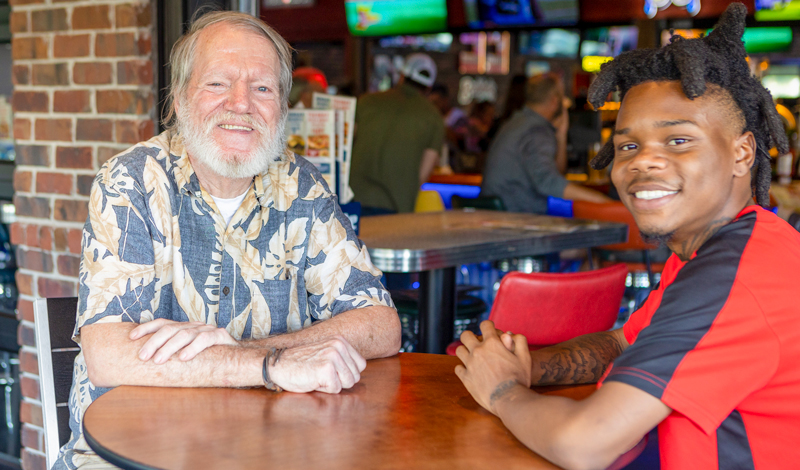by Ray Gutoski
Tampa, Fla.
I encountered Nichiren Buddhism in 1967 in New York, on the lawn of Stony Brook University’s Earth and Science building, where students were holding an introductory meeting. I’d thought it was interesting, potentially quite meaningful, but I didn’t take it seriously until later that same year, when out of the blue, I was struck with severe depression. I dropped out of school, moved in to my mom’s place on Long Island and felt certain I’d fallen into a hole I’d never get out of.
A friend in faith I’d made at the university reached out and got me connected to the SGI members in New York. They came to see me regularly, riding one-and-a-half hours by train and another half hour by cab to assure me that my life was infinitely worthy of respect. Because of them, I began chanting Nam-myoho-renge-kyo and found I was able to battle my negative thoughts, win over them and return to school the following year.
That was some 55 years ago. Since then, I’ve striven to repay my debt of gratitude to my Buddhist practice and my mentor, Ikeda Sensei, by living up to the following from Nichiren Daishonin:
Exert yourself in the two ways of practice and study. Without practice and study, there can be no Buddhism. You must not only persevere yourself; you must also teach others. Both practice and study arise from faith. Teach others to the best of your ability, even if it is only a single sentence or phrase. (“The True Aspect of All Phenomena,” The Writings of Nichiren Daishonin, vol. 1, p. 386)
In April of this year, I met a young woman who reminded me at a glance of myself at her age. I asked how she was and, as I’d suspected, found she was suffering deeply. Sensing she might be more familiar with the term meditation than chanting, I asked if she practiced meditation. When she said yes, I told her that I, too, had a spiritual practice, a practice that allows me to tap the unlimited reserves of courage, wisdom and compassion inherent in my own life. Having overcome depression in my youth, I was able to relay with confidence the central Buddhist teaching that the deeper the swamp, the more beautiful the lotus that blooms there. Did she want to give it a shot? The women’s division members in her area have since taken her under their wings. She received the Gohonzon in May and is doing wonderfully.
Planting a seed doesn’t take time—it can be quick! The important thing is to maintain a life condition in which one can share Buddhism anywhere, at any time. For this, I’ve taken to heart my mentor’s strategy: chanting winning daimoku in the morning, with a vow for kosen-rufu.
Across the street from me is a Dollar General store. I went in there for a couple things and, as usual, went about sharing Buddhism at the checkout. Again, I encountered a young person who reminded me of myself at his age. He asked how my day was going.
“You know,” I said, “I just hit 75, which sounds old even to me. But, actually, I feel younger and more hopeful than ever.” Soon, he began chanting and coming out to meetings. In January, he, too, will receive the Gohonzon. Every time I check in, he reports joyfully on some new benefit.
For my part, reflecting seriously about how to demonstrate actual proof of this practice has led to hugely expanded career and financial goals. Four years ago, having few qualifications, I jump-started an online business. Striving in faith and working really hard each day, I grew into what had felt beyond me at first. To the youth I say, “Don’t wait!” Setting and growing into big goals is what makes life a true adventure. Daimoku and hard work will make your dreams a reality.
You are reading {{ meterCount }} of {{ meterMax }} free premium articles

